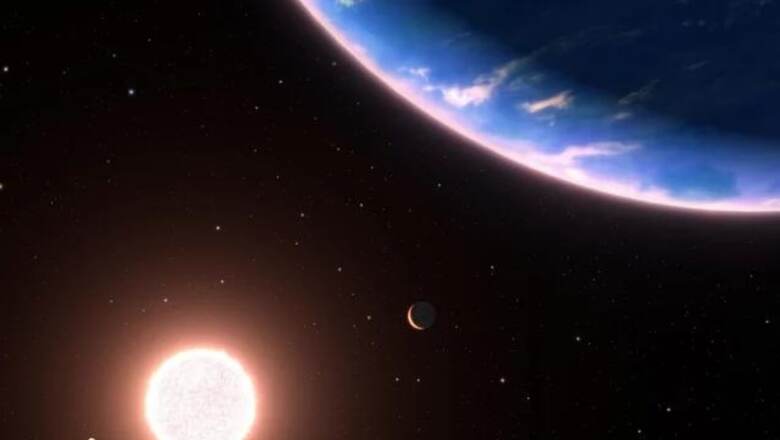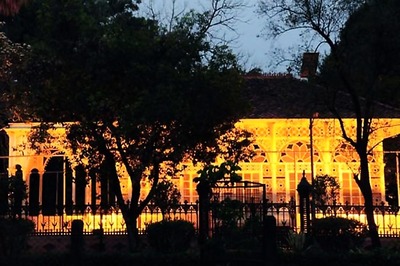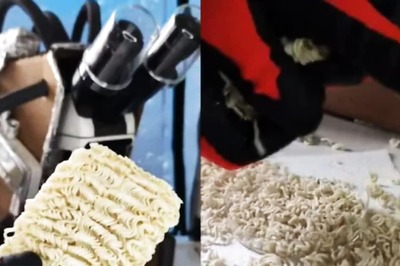
views
Astronomers have recently discovered evidence of water vapour enveloping the exoplanet named GJ 9827d, 97 light-years from Earth. This search was made possible with the Hubble Space Telescope, which sheds light on the possibility of a water-rich atmosphere surrounding this planet.
Water, a common molecule in the vast expanse of the Universe, holds a position of paramount importance for life on Earth. GJ 9827d, though small in size with a diameter not exceeding twice that of Earth, emerges as a potential archetype for water-laden worlds scattered throughout our galaxy.
However, any hopes of interstellar real estate ventures are swiftly quashed by the scorching conditions prevalent on this celestial body, comparable to the sweltering temperatures of Venus, rendering it a veritable steamy world. This celestial entity resides a staggering 97 light-years away in the constellation Pisces.
‘Water-rich atmospheres’
“This would be the first time that we can directly show through atmospheric detection, that these planets with water-rich atmospheres can actually exist around other stars,” said team member Björn Benneke of the Trottier Institute for Research on Exoplanets at Université de Montréal, Canada, in a statement. “This is an important step toward determining the prevalence and diversity of atmospheres on rocky planets.”
“Water on a planet this small is a landmark discovery,” added Laura Kreidberg, MPIA’s director of the APEx (Atmospheric Physics of Exoplanets) department. She is the co-principal investigator of the underlying HST observing program. “It pushes closer than ever to characterizing truly Earth-like worlds.” However, it remains too early to tell whether Hubble spectroscopically measured a small amount of water vapour in a puffy hydrogen-rich atmosphere or if the planet’s atmosphere is mostly made of water.
Hydrogen-rich mini-Neptune?
“Our observing program, led by principal investigator Ian Crossfield of Kansas University in Lawrence, Kansas, was designed specifically with the goal to not only detect the molecules in the planet’s atmosphere but to actually look specifically for water vapour. Either result would be exciting, whether water vapour is dominant or just a tiny species in a hydrogen-dominant atmosphere,” said the science paper’s lead author, Pierre-Alexis Roy of the Trottier Institute for Research on Exoplanets at Université de Montréal, Canada.
However, given its age of some six billion years and proximity to its host star, GJ 9872d should have lost most of its primordial hydrogen due to the intense irradiation, likely leaving behind an atmosphere dominated by water vapour. In addition, any attempt to detect hydrogen signatures failed so far.
“Until now, we had not been able to detect the atmosphere of such a small planet directly. And we’re slowly getting in this regime now,” added Benneke. “At some point, as we study smaller planets, there must be a transition where there’s no more hydrogen on these small worlds, and they have atmospheres more like Venus, which is dominated by carbon dioxide.” Because the planet is as hot as Venus, at 400 degrees Celsius, it definitely would be an inhospitable, steamy world if the atmosphere were predominantly water vapour.
At present, the astronomers are left with two possibilities. The planet is still clinging to a hydrogen-rich envelope laced with water, making it a mini-Neptune. Or, it could be a warmer version of Jupiter’s moon Europa, which has twice as much water as Earth beneath its crust. “The planet GJ 9827d could be half water, half rock. And there would be a lot of water vapour on top of some smaller rocky body,” said Benneke.



















Comments
0 comment